Hosting the Fifth ECEC Research Conference
The fifth ECEC Research Conference, hosted by Child Research Net (CRN), was held in Shinjuku on Sunday, October 4, 2015. This conference focused on the theme of "Early Childhood Education and Care (ECEC) in Japan and around the World (2): The Strength of ECEC in Japan from a Comparison of ECEC in Four Countries." After ECEC practices in the four countries of England, South Korea, the Netherlands and Sweden were introduced, a workshop was held to compare them with practices in Japan. In an open and casual manner, participants discussed the strength of ECEC in Japan and what Japan could also learn from other ECEC practices around the world. In the panel discussion, researchers discussed what was now needed in ECEC in Japan.
DATE: 10:00 -16:30 Sunday, October 4, 2015 PLACE: Event Hall, Bellsalle Nishi-shinjuku ORGANIZER: Child Research Net |
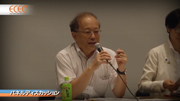 Click here for digest video clip |
Session 1: Introduction of ECEC around the world
Session 2: Workshop (Group discussion held by audience)
[England]
Mikiko Tabu (Professor, Seitoku University Graduate School)
[South Korea]
Minjee Kim (Associate Professor, Seitoku University Junior College)
[The Netherlands]
Mari Matsuura (Associate Professor, Kyoto Kacho University)
[Sweden]
Keiko Mizuno (Former professor at Japan Women's College of Physical Education)
[Japan]
Takako Kawabe (Professor, University of the Sacred Heart)
Session 3: Panel discussion
Session 1: Lectures Concerning Early Childhood Education and Care across the World
[England]Comprehensive ECEC Reforms That Respond to Parents' Needs Offer a Good Example for Japan
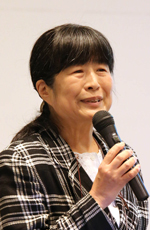
Mikiko Tabu, Professor, Seitoku University Graduate School, gave the first presentation on ECEC in England.
Under the Labour Party government in England (1997-2010), an integrated curriculum for childcare and education was established and all ECEC facilities became subject to government inspection. Professor Tabu pointed out that during this short period of about ten years from the late 1990s, ECEC in England quickly grew and developed. Besides the integration of care and education, which had once been separated, this period also saw comprehensive reforms that aimed to help child-raising parents, for example, by offering free ECEC services. These were cited as examples of what Japan could learn from England.
The presentation also touched on the issues faced by ECEC in England. For example, ECEC facilities have been overwhelmed by those seeking data and analysis on child development in the intense pursuit of empirical results to support expanding ECEC policies. Consequently, teachers have difficulty in acquiring time to spend with children giving their full attention.
[South Korea]
Nuri Curriculum, Encouraging Discovery in Children through Outdoor Experience
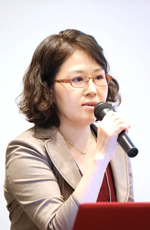
The next speaker was Minjee Kim, Associate Professor, Seitoku University Junior College, who talked about efforts in South Korea to integrate early childhood education and childcare into one system.
Her presentation introduced the Nuri Curriculum, which is based on holistic education and fostering children's creativity. She explained that it was established in 2012 and implemented the following year for all children aged 3 to 5 in kindergartens and childcare centers (euh lin e jip) nationwide. Also introduced were of examples of activities carried out in a kindergarten encouraging physical outdoor play as well as an interest in nature, all of which are emphasized in the Nuri Curriculum.
The integrated curriculum has, however, given rise to some concerns. For example, it has been difficult for childcare centers, which have focused more on childcare than on education, to immediately begin offering the same level of educational activity as kindergartens, which was required by the new integrated curriculum. Remarking on the need to eliminate differences in the training of childcare workers and kindergarten teachers, she emphasized that integrating childcare and kindergarten should also be carried out carefully in Japan.
[The Netherlands]
ECEC Emphasizing on School Readiness in the Netherlands, Where Children Are the Happiest in the Developed World
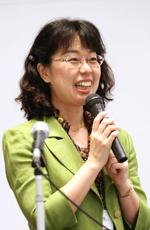
The third presenter, Mari Matsuura, Associate Professor, Kyoto Kacho University, spoke on the relation between ECEC in the Netherlands and compulsory education.
First, she began with an explanation of the system, noting that among the ECEC facilities, kindergarten was integrated with elementary school in 1985, becoming kindergarten classes (first and second year) in basic schools (for students aged 4 to 12). She also gave examples of how children in kindergarten classes were taught language and arithmetic by the teacher on the one hand, and were playing in accordance with the monthly project on the other hand. While pointing out similarities to and differences from third grade classes and higher, she explained the background of implementation of the system, so that it may serve as an example for considering future issues in Japan. According to UNICEF statistics, child wellbeing, based on how children perceive their own happiness, is the highest in the Netherlands among developed countries, she added. Although ECEC programs are directed toward school readiness, and the age of school entry are brought forward, it should be noted that these children have maintained high self-esteem among them.
The presentation also reported on recent trends in the relation between childhood education and childcare and between ECEC facilities and the family in the Netherlands.
[Sweden]
Sweden Improves the Social Welfare System in Response to Social Needs and Realizes High-quality ECEC
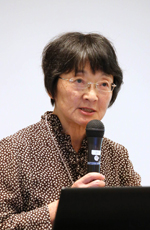
Keiko Mizuno, former professor at Japan Women's College of Physical Education, gave a talk on ECEC in Sweden and its relation to the social welfare system.
Compared with Japan, OECD data for Sweden indicates high social expenditure for families as a percentage of the GDP and a high employment rate and fertility rate of women. The working hours of ECEC teachers also show that they continue to maintain a work-life balance. This can be attributed to such policies as parental leave for both men and women, and it was emphasized that this policy has been implemented and expanded in stages since the 1970s when women in the workforce increased. Sweden's ECEC system integrated education and care in 1975, and it was argued that although the problem of a high waiting list for children who wish to enter these facilities was more severe than in Japan after the 1970s, Sweden was able to overcome this problem.
Introducing a preschool as one example of ECEC, she showed how it respected the democratic process and children's rights and how teachers listened to children and skillfully stimulated their interests and curiosity.
[Japan]
To Continue and Further Develop Effective Activities to Foster 21st Century through Play
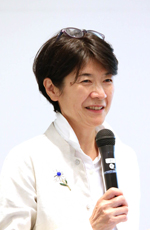
The fifth presentation was given by Takako Kawabe, Professor, University of the Sacred Heart, who reflected on the four countries introduced in the previous four presentations as she analyzed the quality of ECEC in Japan.
ECEC that places an importance on play in informal groups and overall learning through play now has a history of more than a century. Through play, children learn about others as a subject, how to relate to them, and also about themselves in the process of relating to others. Professor Kawabe emphasized that play cultivates the skills of identifying a problem, solving it and communication--the very skills defined as the 21st century skills--and underscored their continued importance for the future.
Furthermore, in order to maintain and develop Japan's traditional ECEC, she stated we must continually consider how to strengthen the relationship between the community and the family, to improve and enrich the content of ECEC, and to raise the quality of teachers.
Session 2: Workshop
ECEC in Japan is Characterized by High-quality TeachersIn the second session of the conference, participants were divided into eight groups to discuss ECEC in Japan and in the four countries that had been introduced in the first session. Taking part in the discussions were parents, ECEC teachers, researchers, elementary and junior high school teachers, university and vocational school students, as well as corporate and government employees. From various perspectives and positions, they discussed the similarities and differences between Japan and other countries, suggestions for Japan based on the experience of other countries, and the strengths of ECEC in Japan.
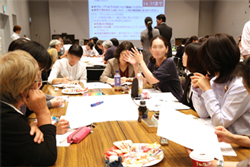
|
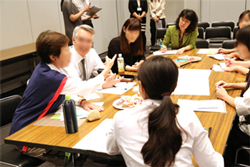
|
As for what Japan could learn from other countries, it was pointed that a work-life balance should be achieved, while the Japanese system was widely recognized for its high-quality teachers.
Each group summed up its discussion on poster-sized papers, which was then reported by the researcher, appointed as an observer.
■ Group work: Examples of Discussion| ◎ Similarities between Japan and other countries | |||
|---|---|---|---|
|
| ◎ Differences between Japan and other countries | |||||
|---|---|---|---|---|---|
|
| ◎ Suggestions for Japan | ||||||
|---|---|---|---|---|---|---|
|
| ◎ The strengths of ECEC in Japan | ||||||
|---|---|---|---|---|---|---|
|
Session 3: Panel discussion
What Are the Current Issues for ECEC in Japan?The third session of the conference featured an eight-member panel discussion moderated by Yoichi Sakakihara, Director, CRN, and Vice-President, Ochanomizu University, which included the five presenters in the first session together with Nobuko Kamigaichi, Professor, Jumonji University; Miwako Hoshi, Professor Emerita, Nagoya University of Arts; and Mariko Ichimi, Senior Researcher, National Educational Institute for Policy Research.
The main issue focused on what ECEC facilities in Japan can and should do today. Citing good case studies, the eight discussants gave their own views on the importance of adopting and adapting solutions to suit each facility, to respect each child, and to cultivate self-esteem. A number of panelists underscored the need for teachers, researchers, and parents to transcend their respective standpoints and communicate on aims and principles of ECEC.
In closing, Professor Kawabe stated that the notion of "play" in Japanese ECEC is defined as something both the children and teachers build up on. She noted that play supports children's growth in a holistic manner in daily life and urged those engaged in ECEC in the audience to approach their work with confidence.
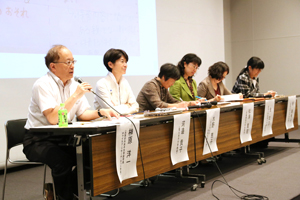
This symposium was not simply a series of lectures by specialists; all those present actively participated in discussions that probed basic themes ranging from diverse viewpoints of ECEC to the definition of good ECEC for children and what should be done to improve it. In the process, the characteristics of each country and its good aspects in Japan were highlighted. Together with everyone, we would like to consider how to incorporate the best practices of other countries in Japan while sharing our strengths with others. We welcome your views, advice, and comments.














